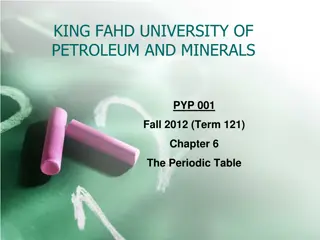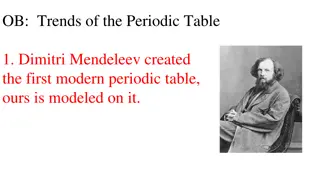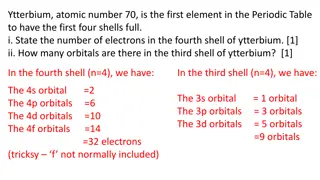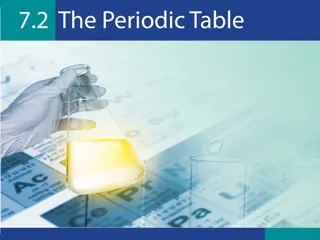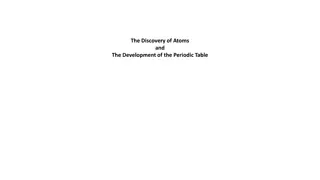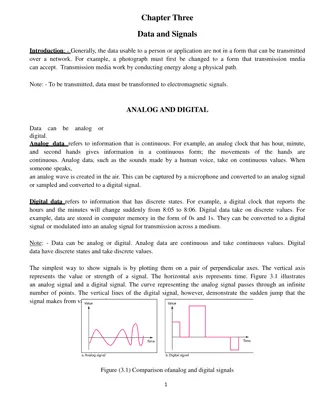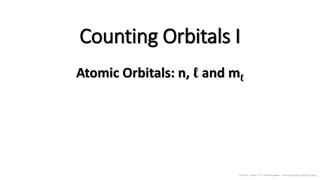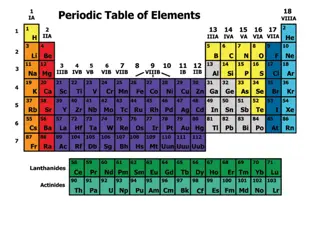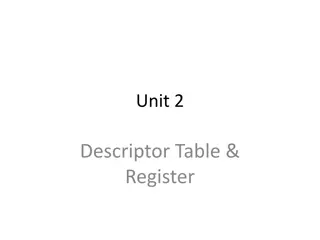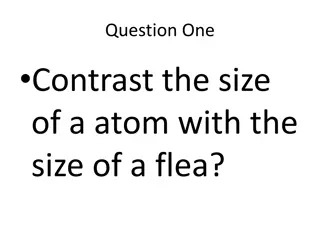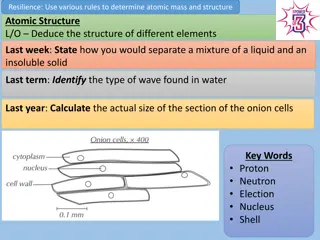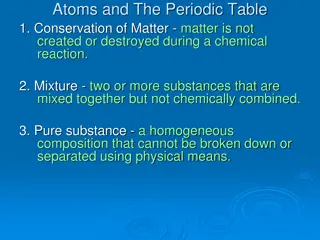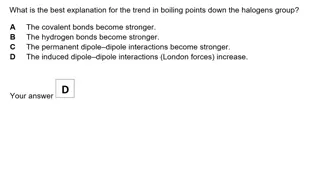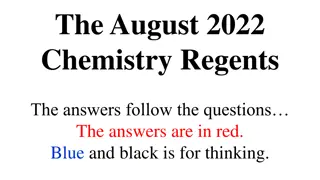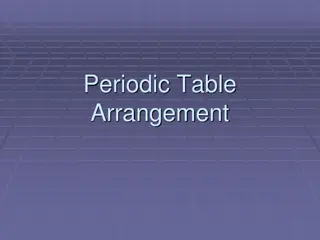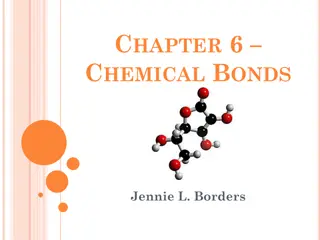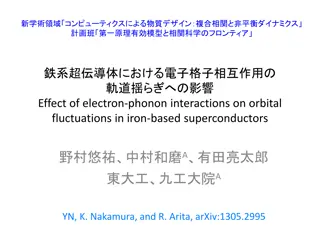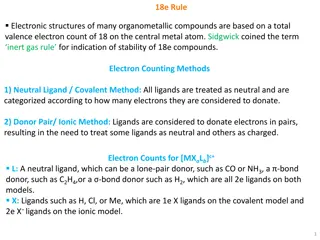Understanding Electron Configurations and the Periodic Table in Chemistry
Explore the world of electron configurations in atoms, subshells, and electron arrangement using the periodic table. Learn about the organization of electrons in subshells, different ways to represent electron arrangements, and how to determine electron configurations based on the periodic table. Dive into discussions on electron shells, subshells, and their respective electron counts, and grasp the shorthand notation for electron configurations. Prepare for interactive activities and discussions to enhance your understanding of this fundamental concept in chemistry.
Download Presentation

Please find below an Image/Link to download the presentation.
The content on the website is provided AS IS for your information and personal use only. It may not be sold, licensed, or shared on other websites without obtaining consent from the author. Download presentation by click this link. If you encounter any issues during the download, it is possible that the publisher has removed the file from their server.
E N D
Presentation Transcript
Living By Chemistry SECOND EDITION Unit 1: ALCHEMY Matter, Atomic Structure, and Bonding
Lesson 24: Shell Game Electron Configurations
ChemCatalyst These drawings show two different ways to represent the arrangement of the electrons in atoms of the element calcium, Ca. 1. Name at least two differences in the drawings. 2. Name at least two similarities in the drawings.
Key Question What does the periodic table indicate about the arrangements of electrons?
You will be able to: describe the structure of an atom in terms of electron shells and subshells use the periodic table to determine the electron arrangement in an atom and to write electron configurations explain the organization of the periodic table in terms of the arrangements of electrons in subshells
Prepare for the Activity Work in pairs.
Discussion Notes The electron shells in the shell model of an atom (except for n = 1) are divided into subshells. Shell Number of electrons in the shell Subshell Number of electrons in the subshell n = 1 2 1s 2 2s 2 n = 2 8 2p 6 3s 3p 3d 2 6 n = 3 18 10 4s 4p 4d 4f 2 6 10 14 n = 4 32
Discussion Notes (cont.) In an electron configuration, the number indicates the shell number, the letter indicates the subshell within the shell, and the superscript indicates the number of electrons in the subshell. Electron configuration: A shorthand way to keep track of all the electrons in an atom of an element for all the subshells that have electrons. The number of electrons in each subshell is shown as a superscript.
Discussion Notes (cont.) The periodic table is organized in subshell blocks.
Discussion Notes (cont.) The order of filling subshells does not always correspond to the numerical order of the subshells. The elements in the different subshell blocks have related properties.
Wrap Up What does the periodic table indicate about the arrangements of electrons? Each electron shell in the shell model, except for n = 1, is divided into subshells. Each subshell can hold a specific maximum number of electrons. The periodic table can assist you in figuring out the placement of electrons in subshells. Chemists keep track of electrons and the subshells they are in by writing electron configurations.
Check-In Identify the element with this electron configuration: 1s22s22p63s23p64s23d104p3










